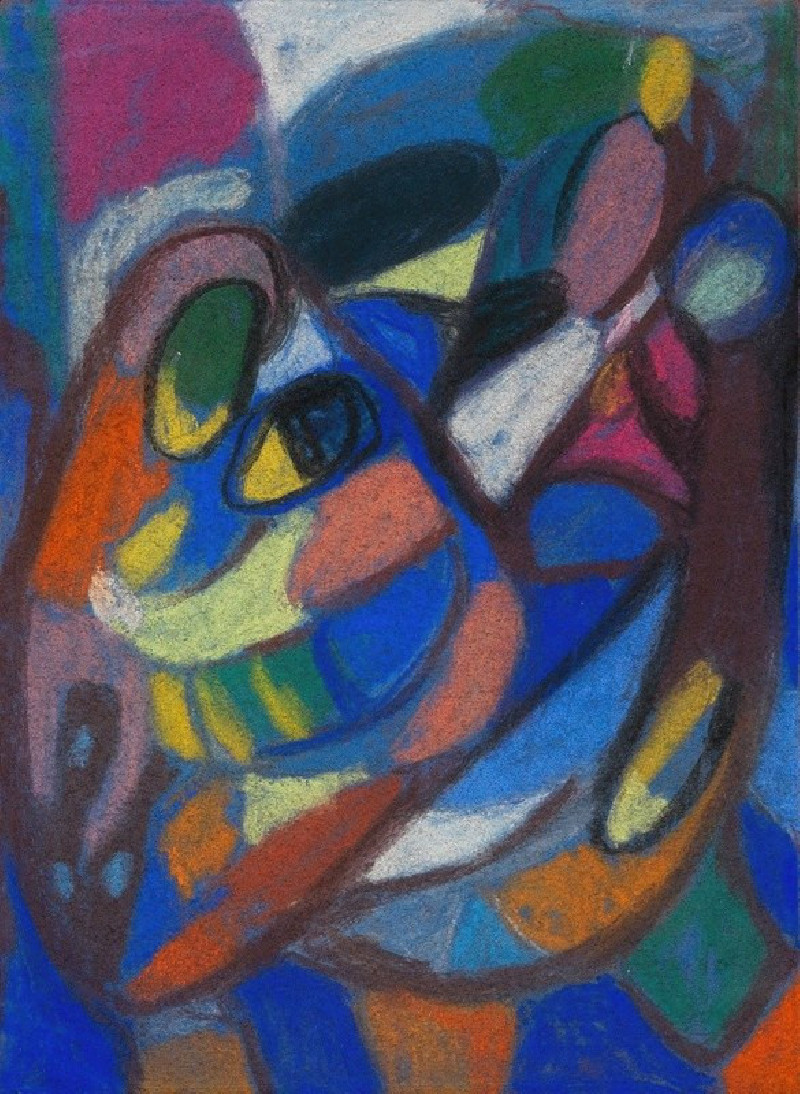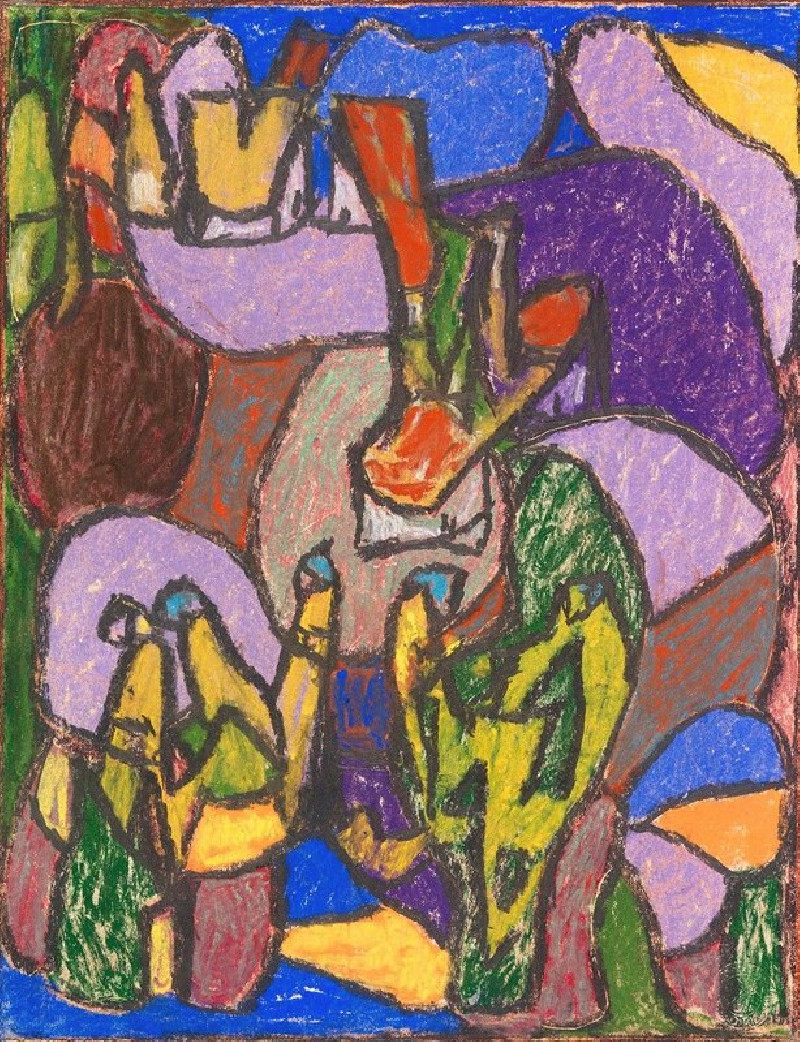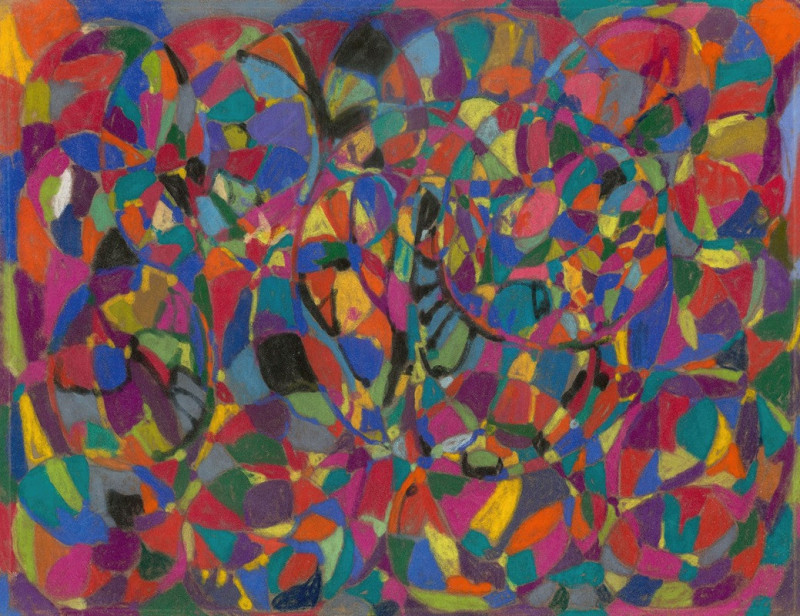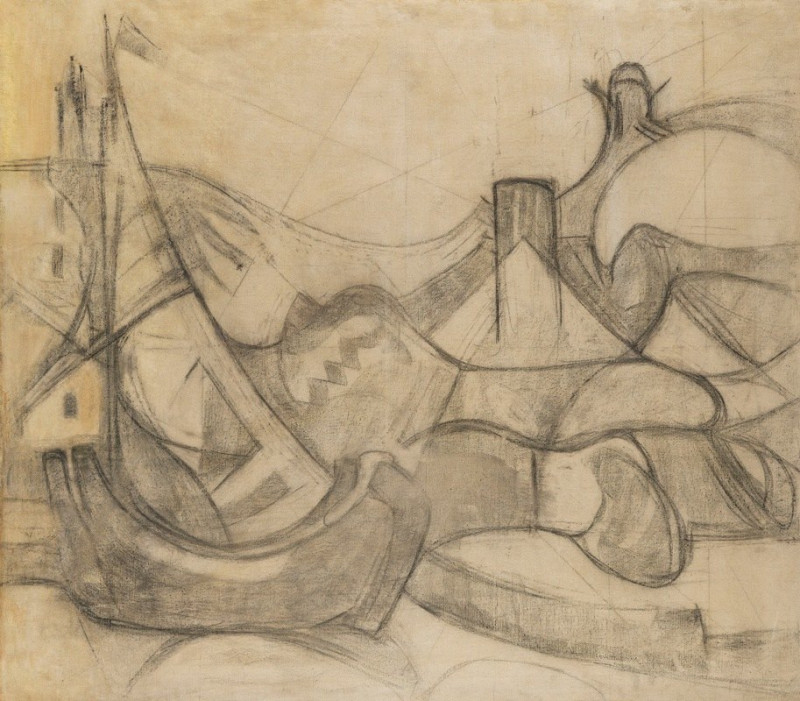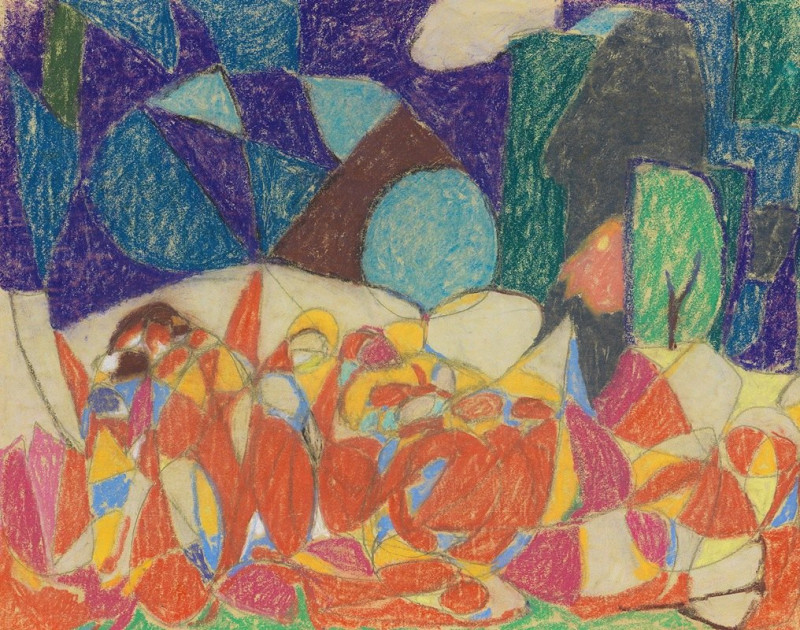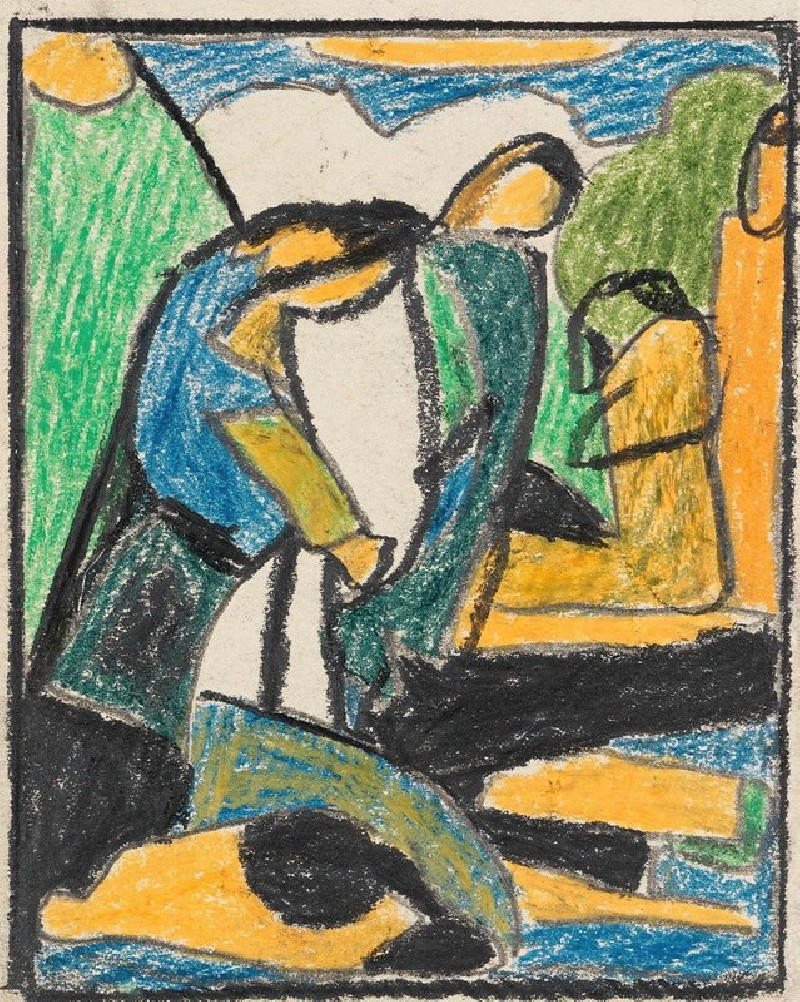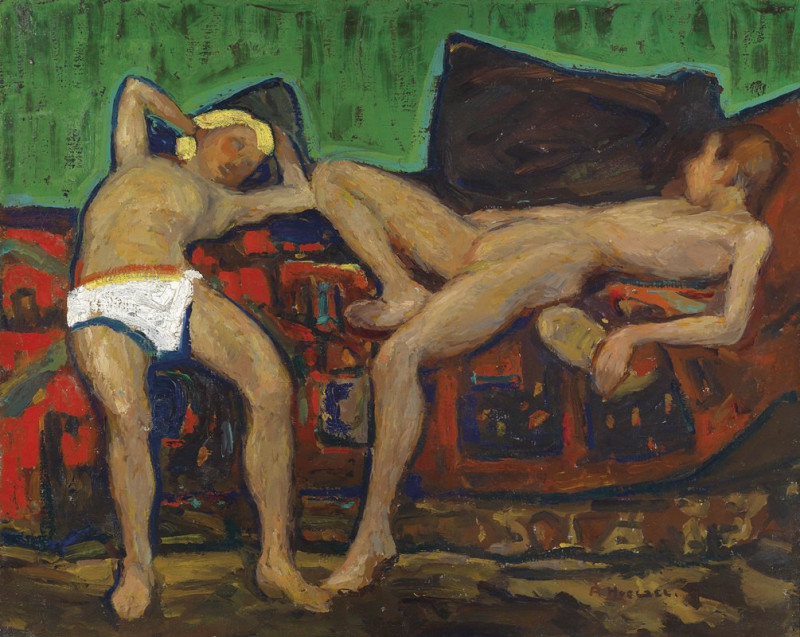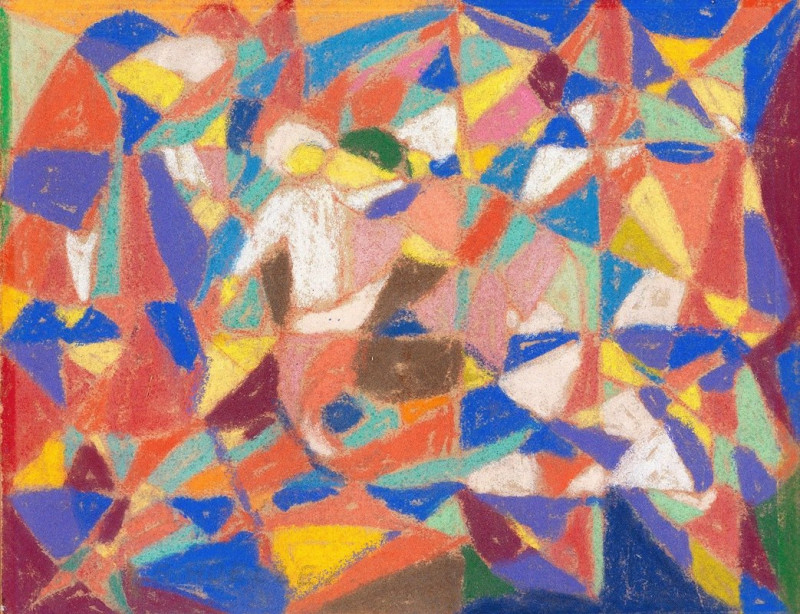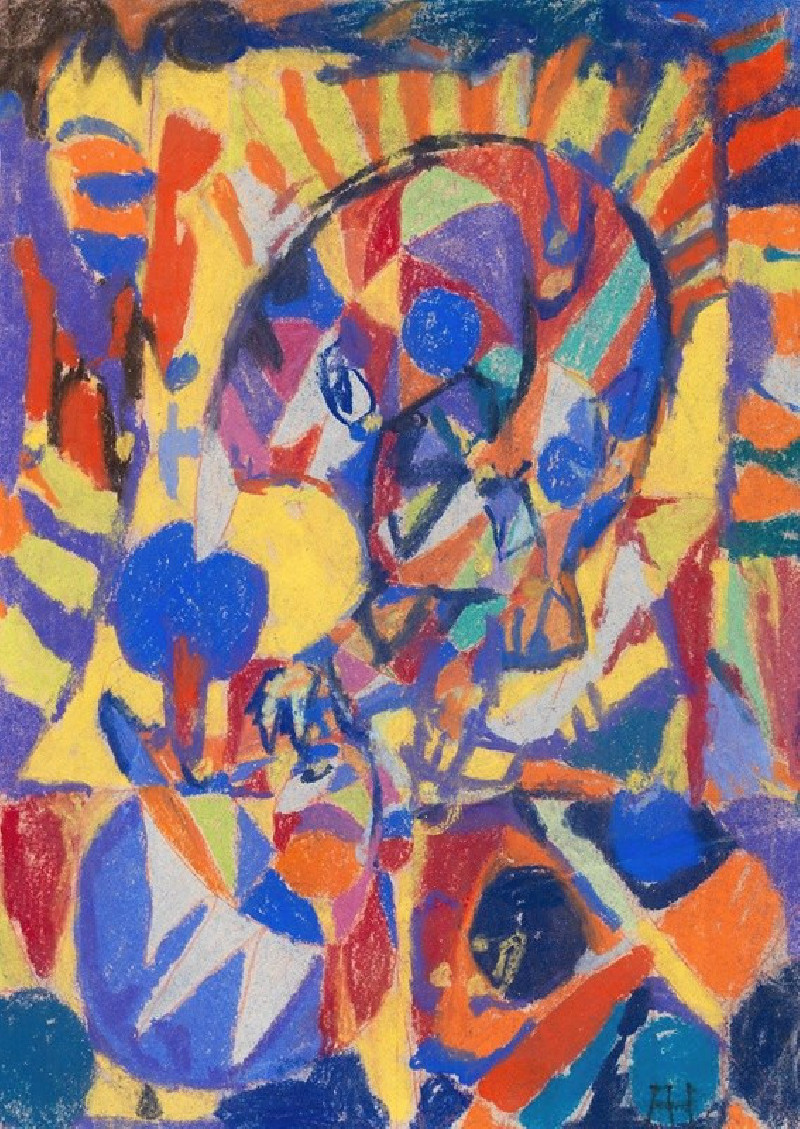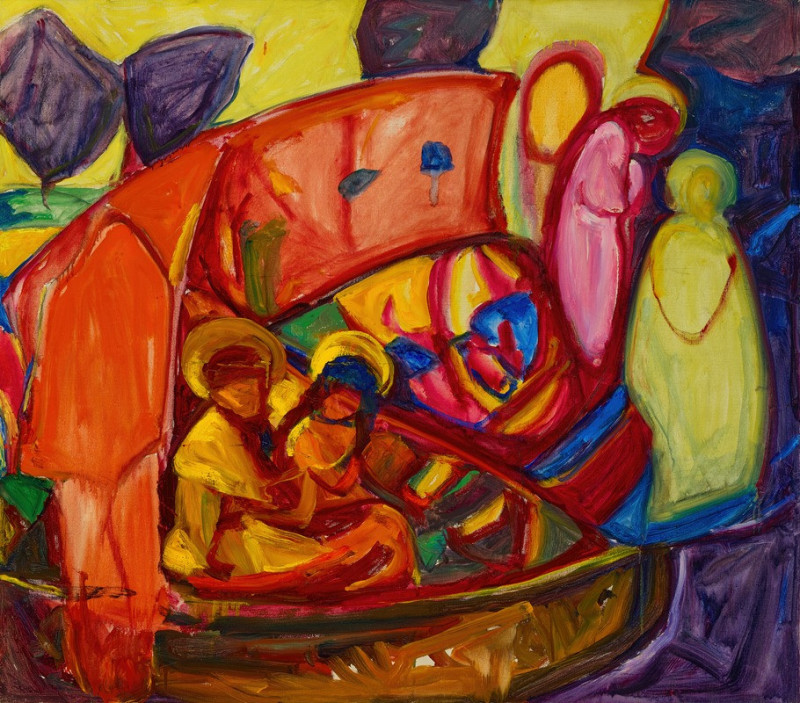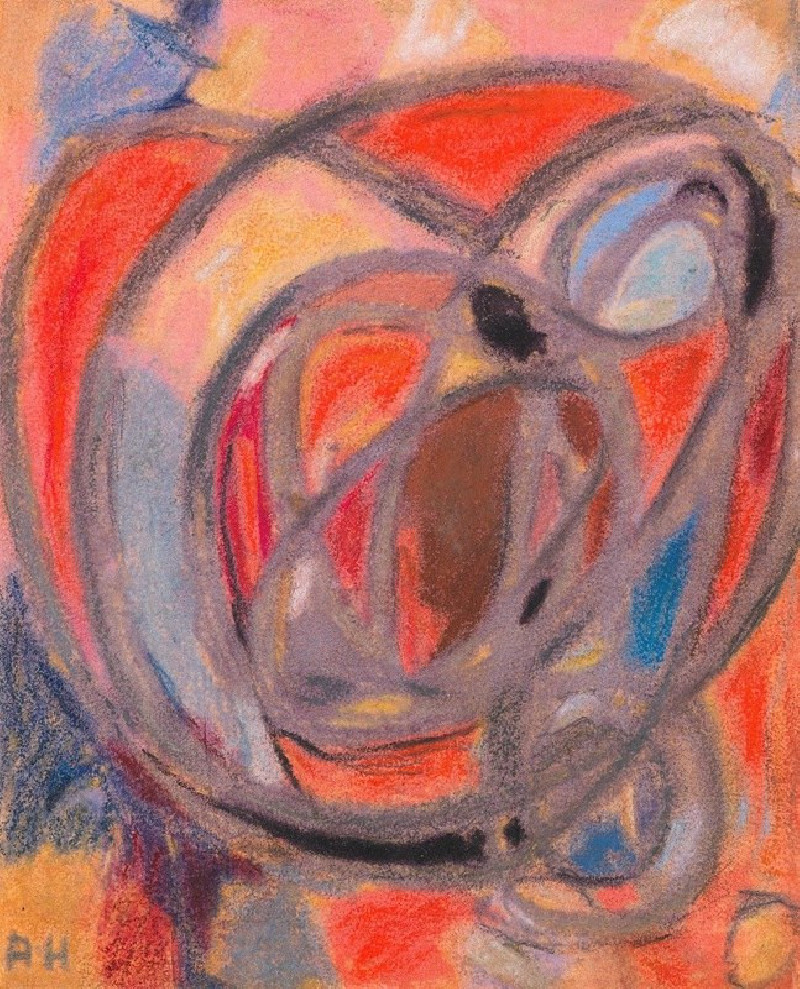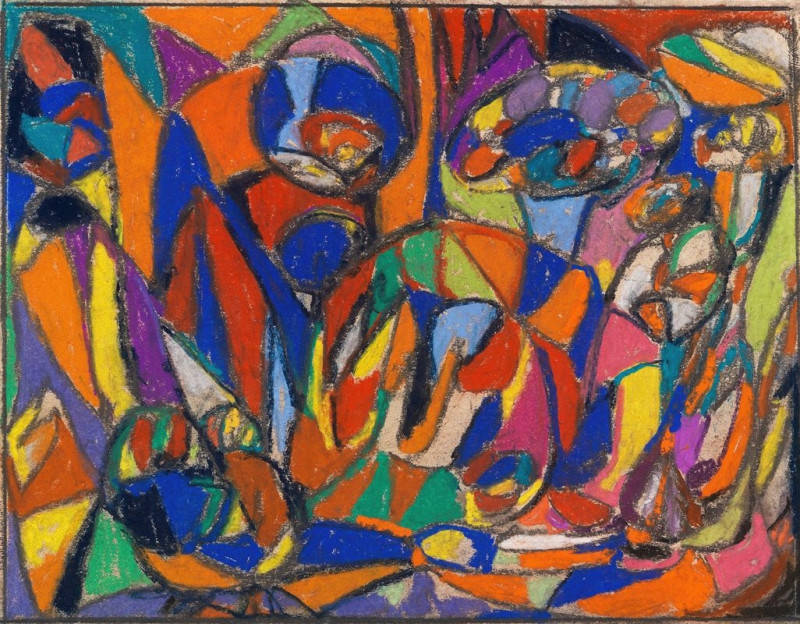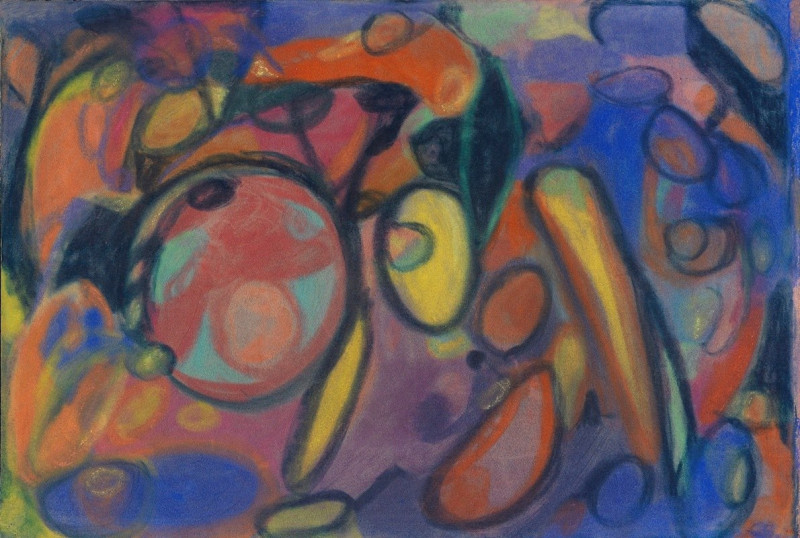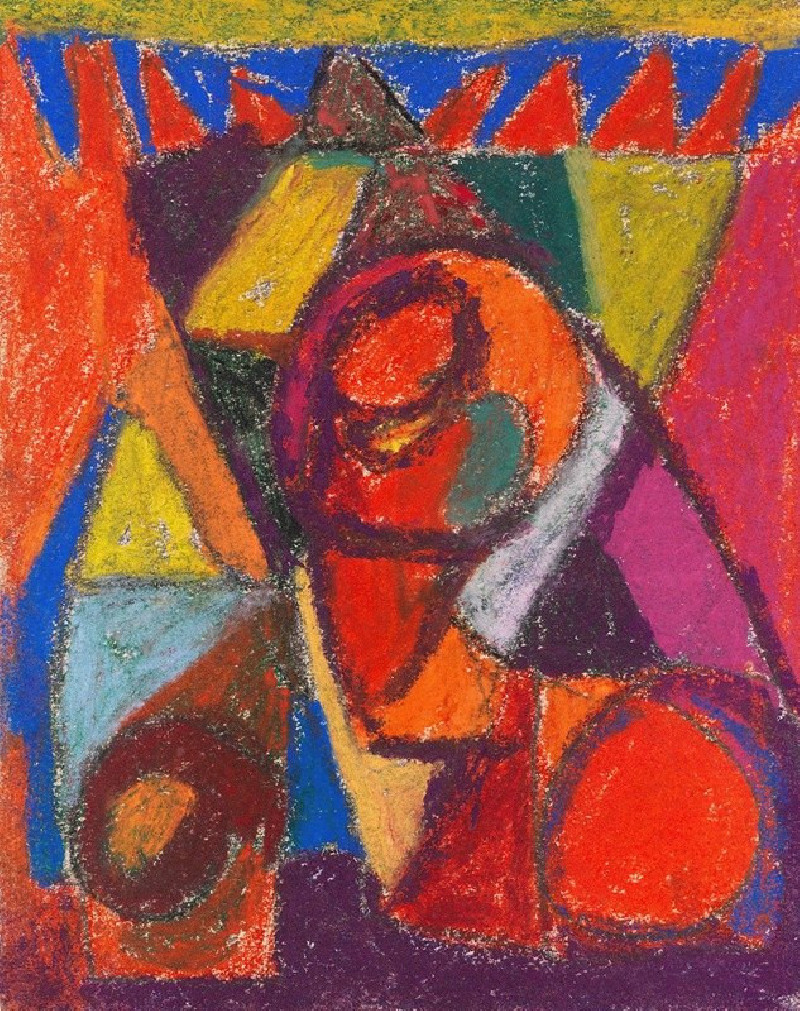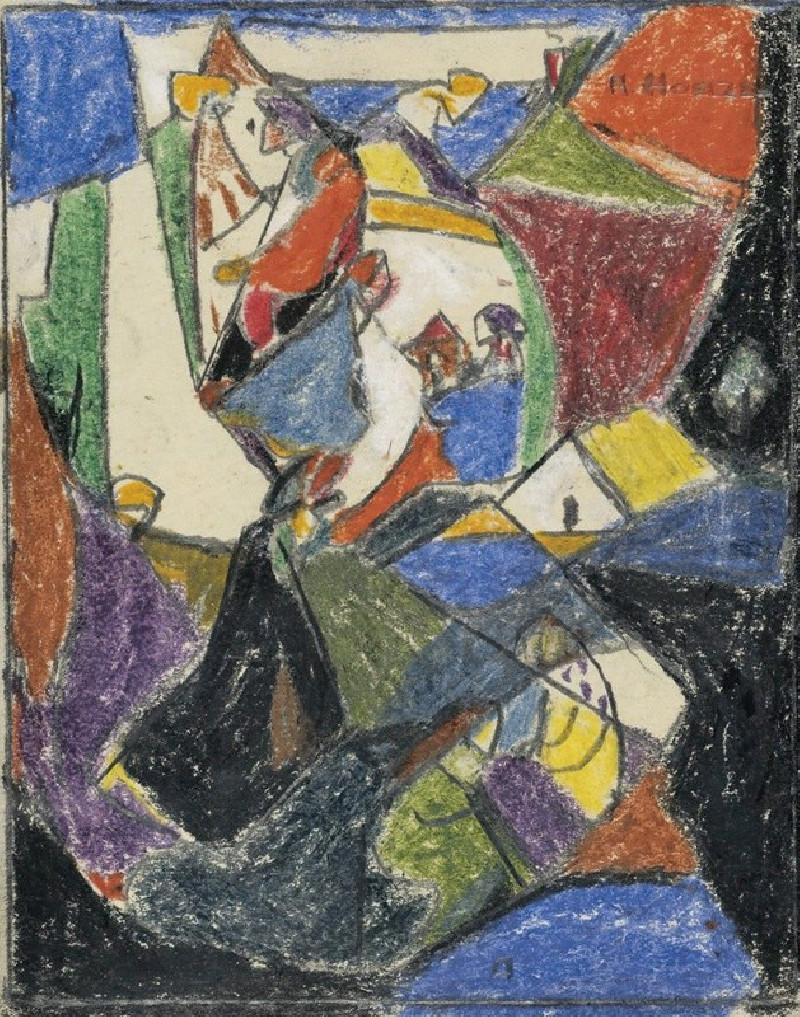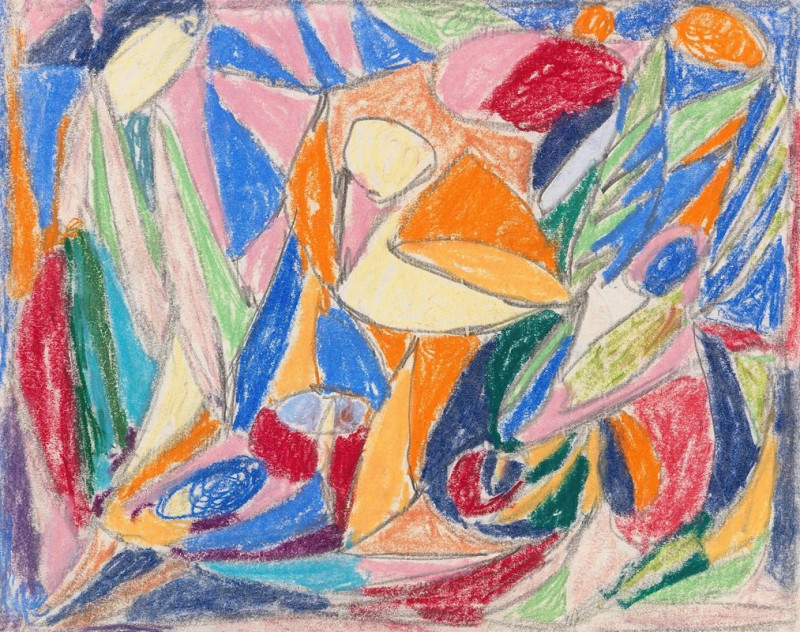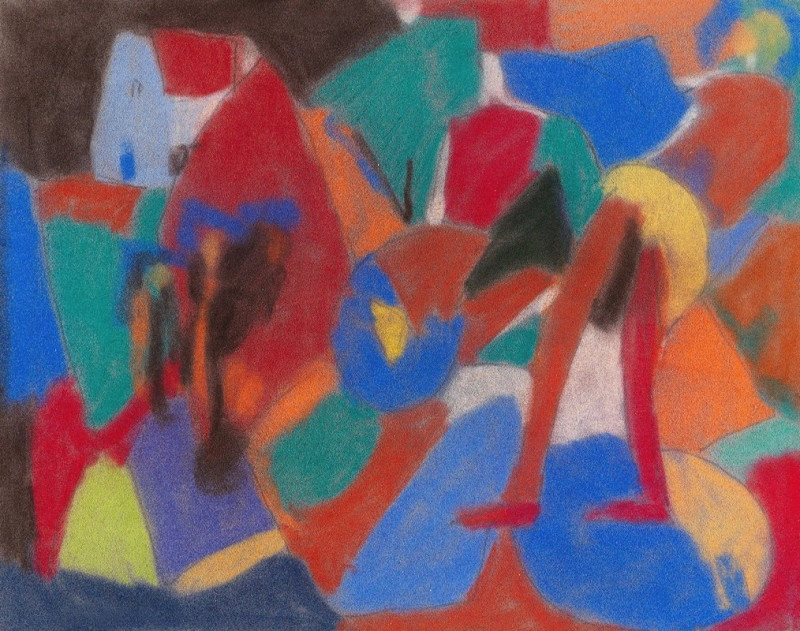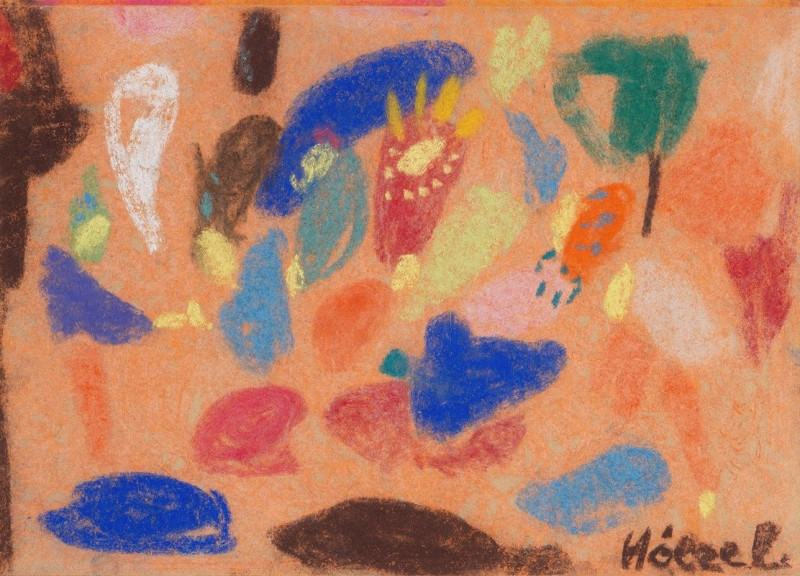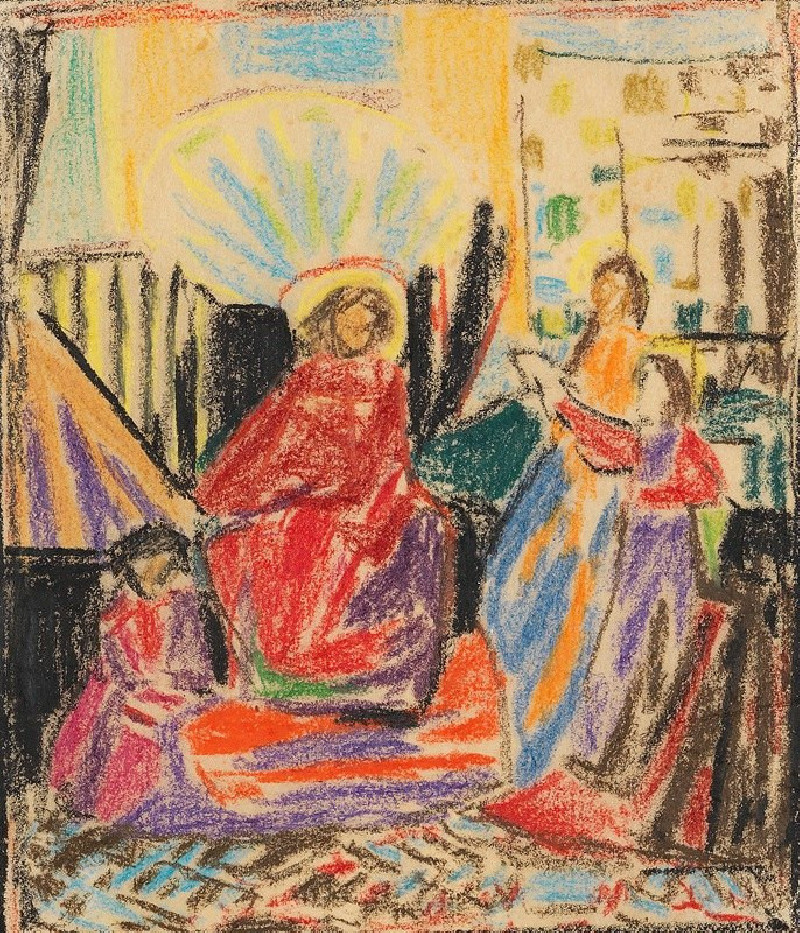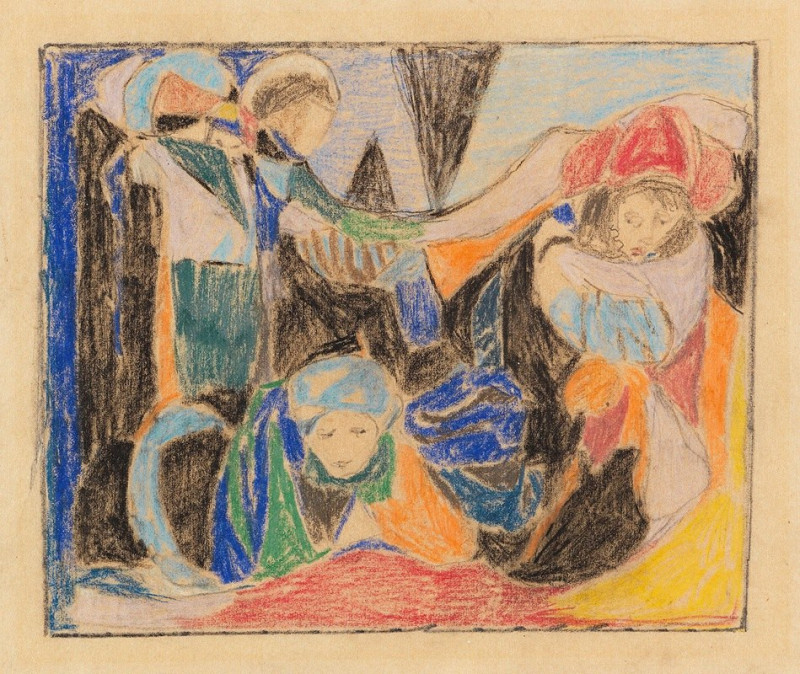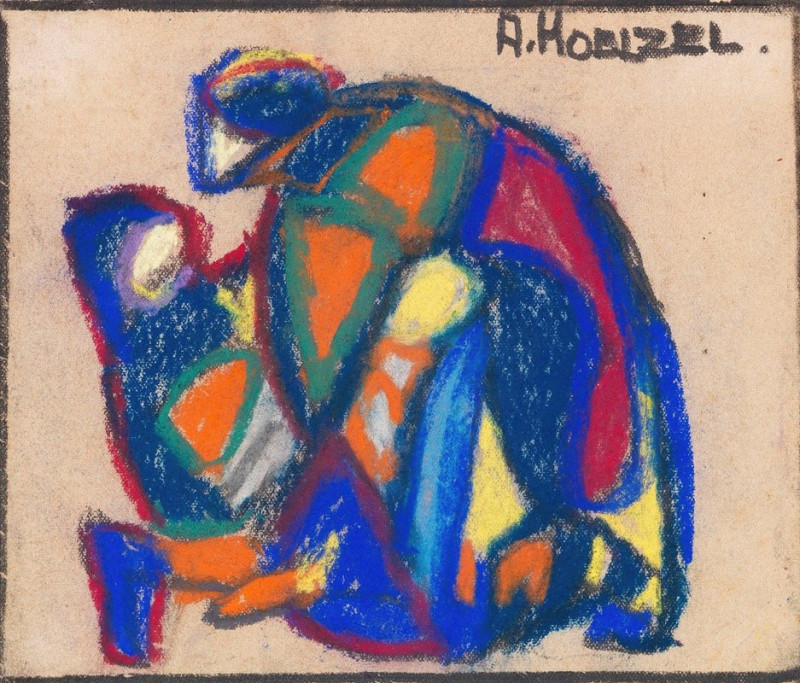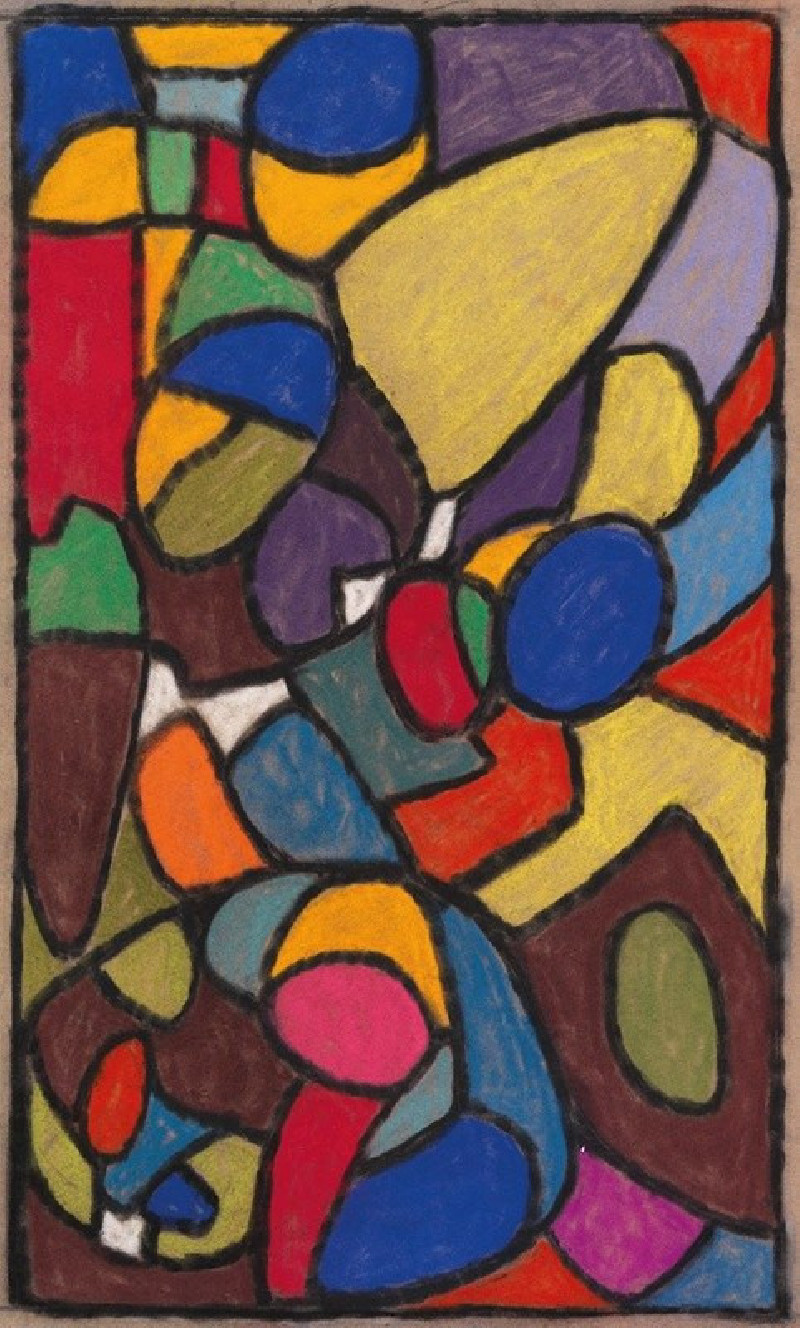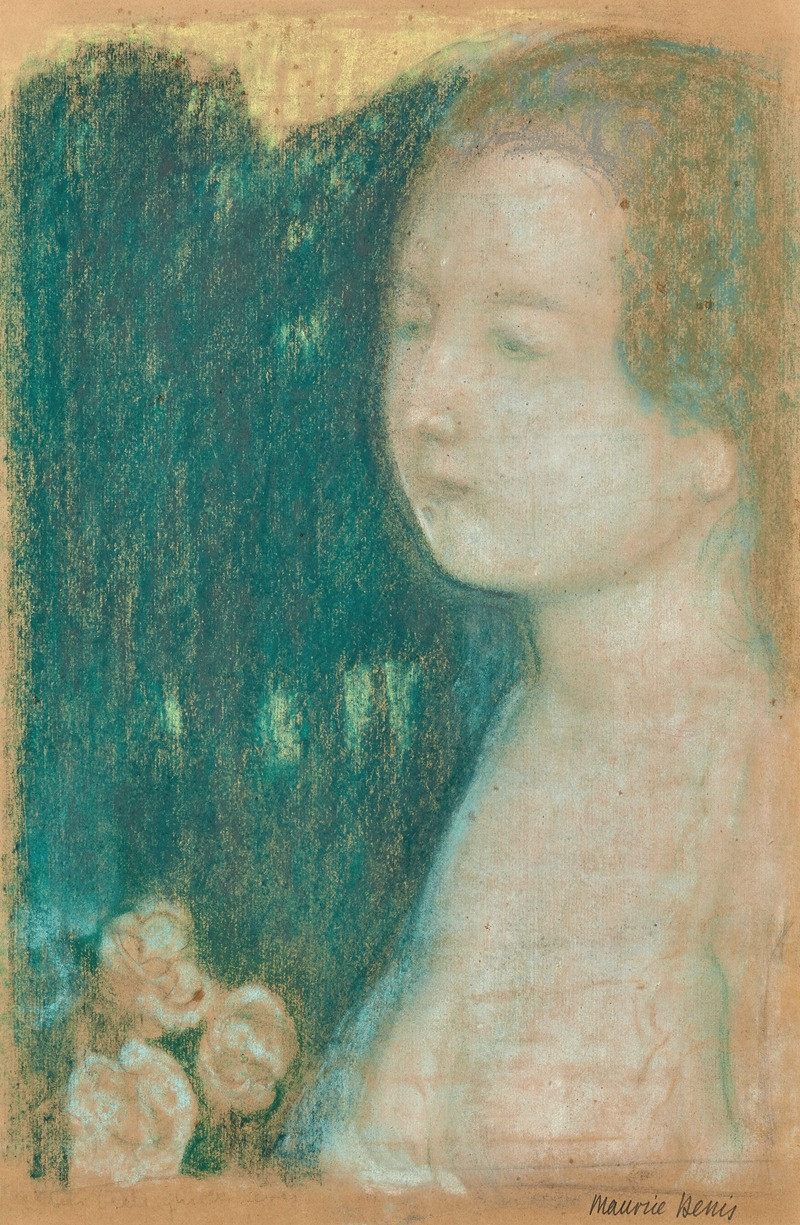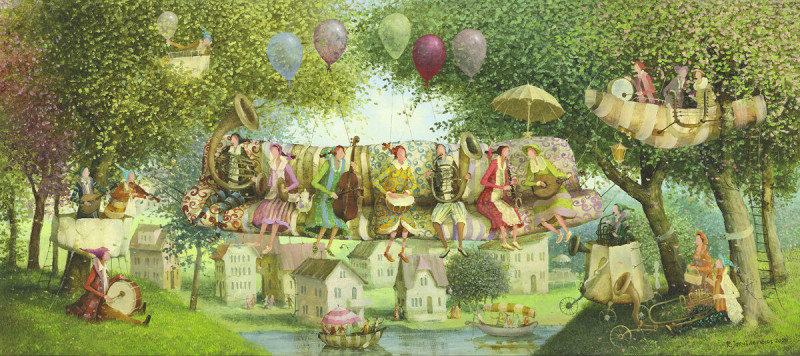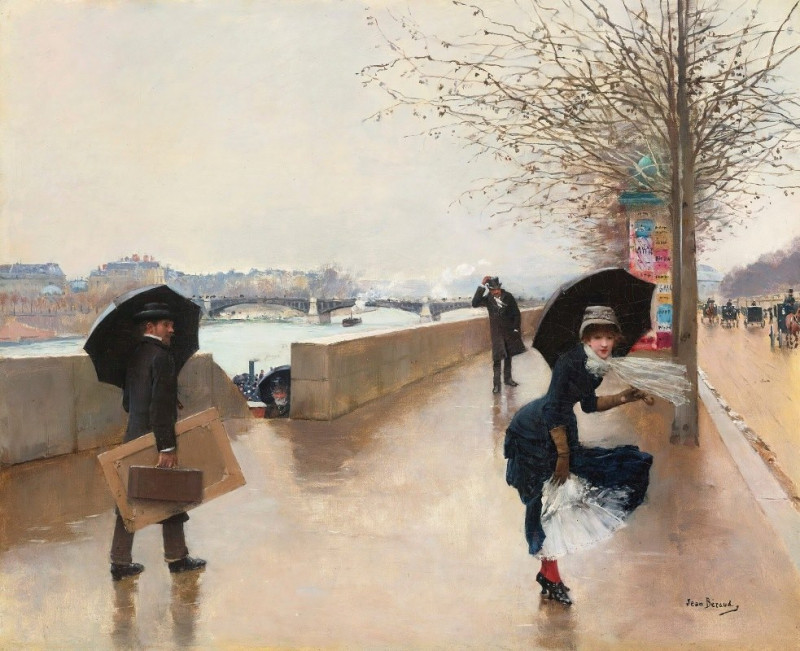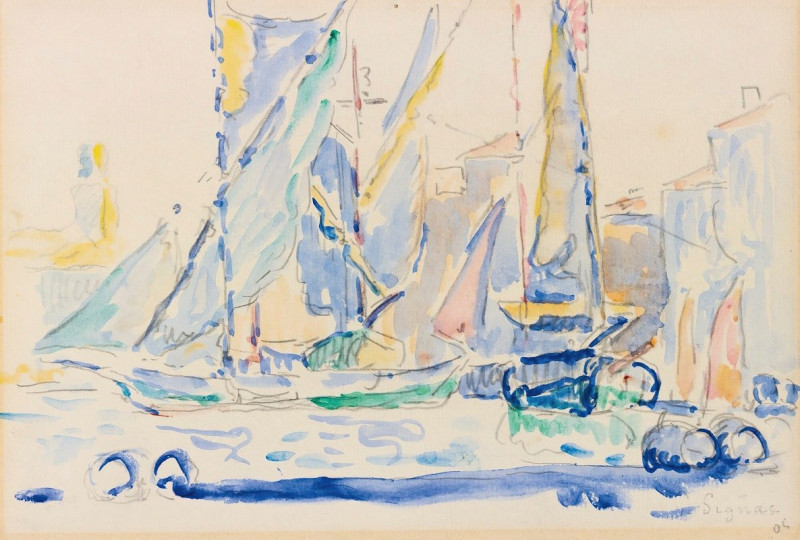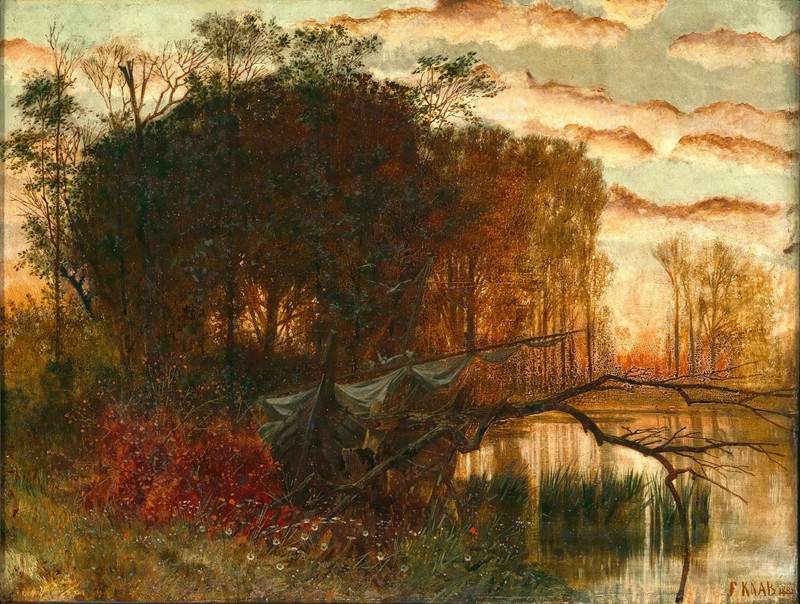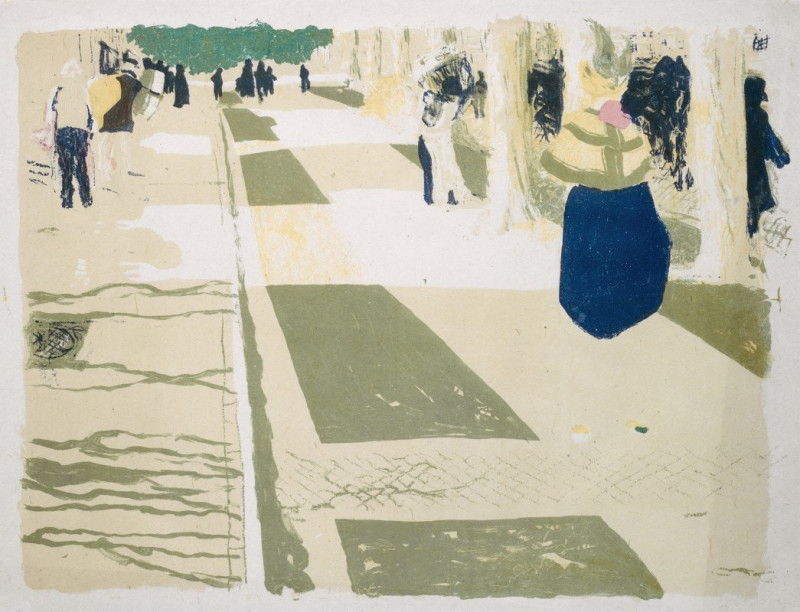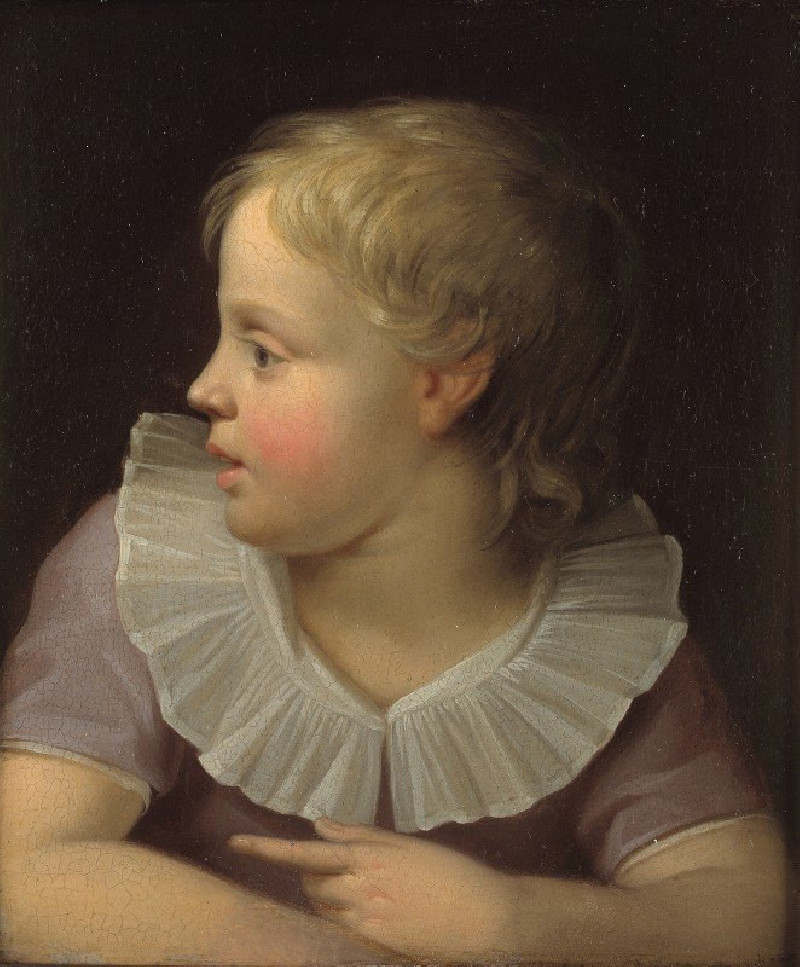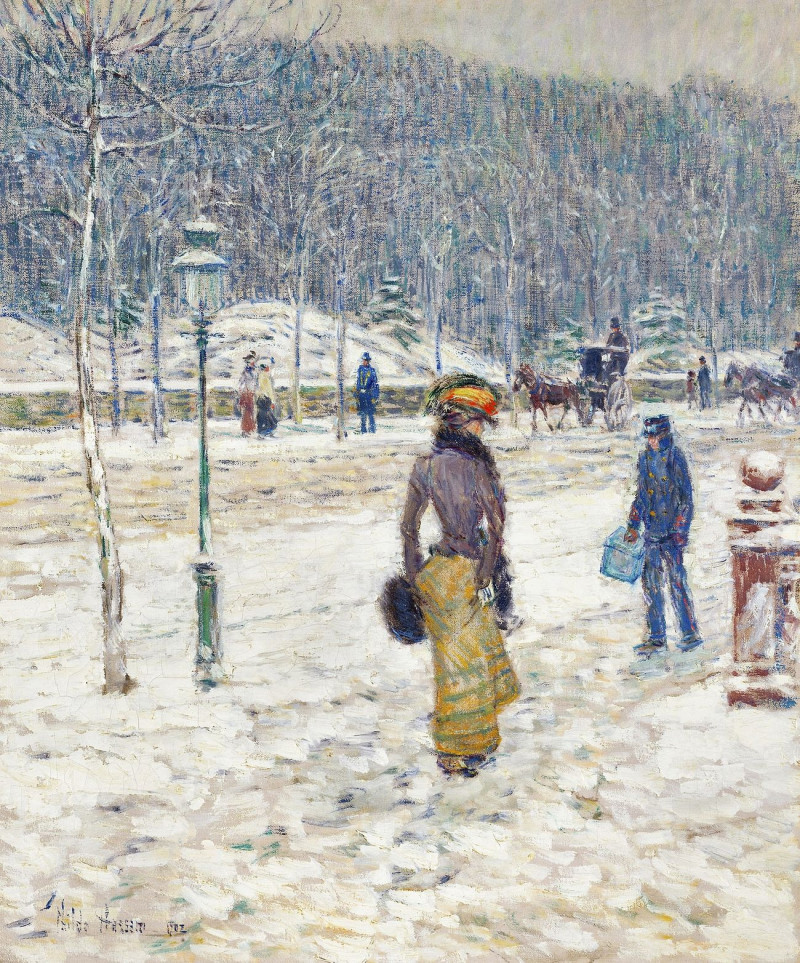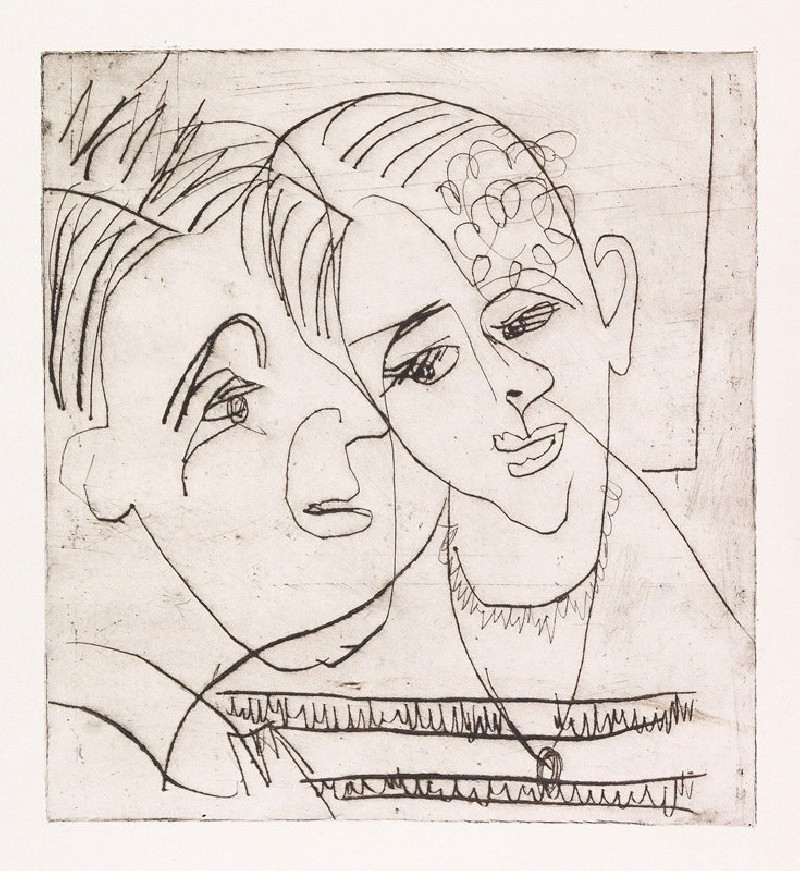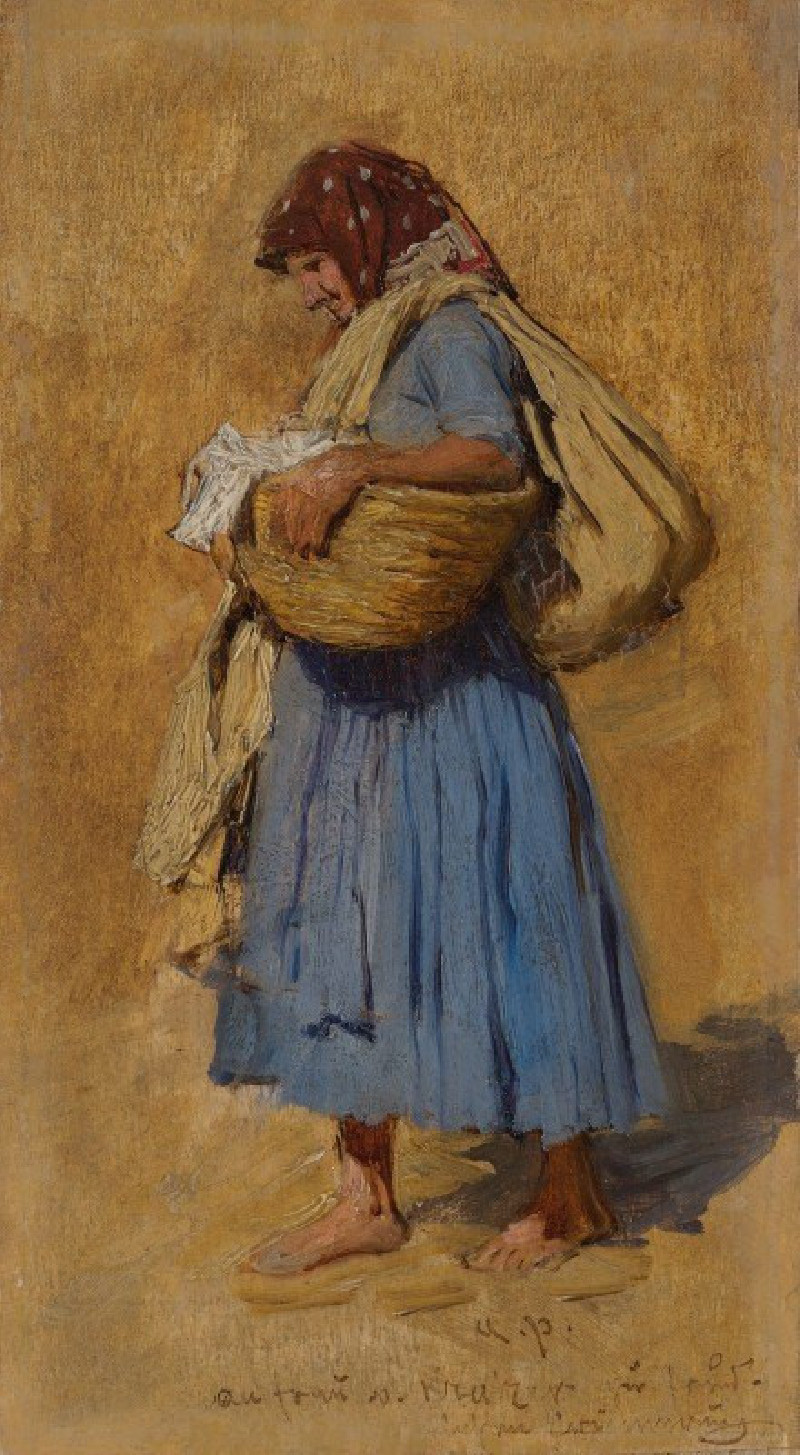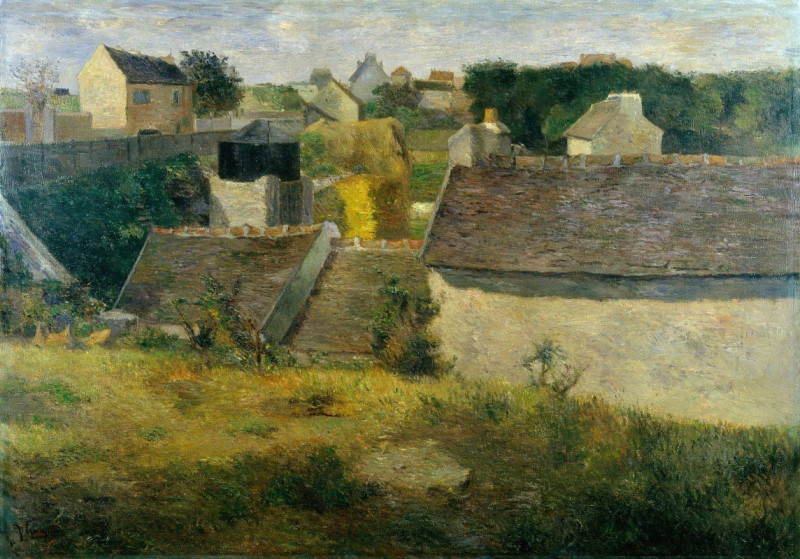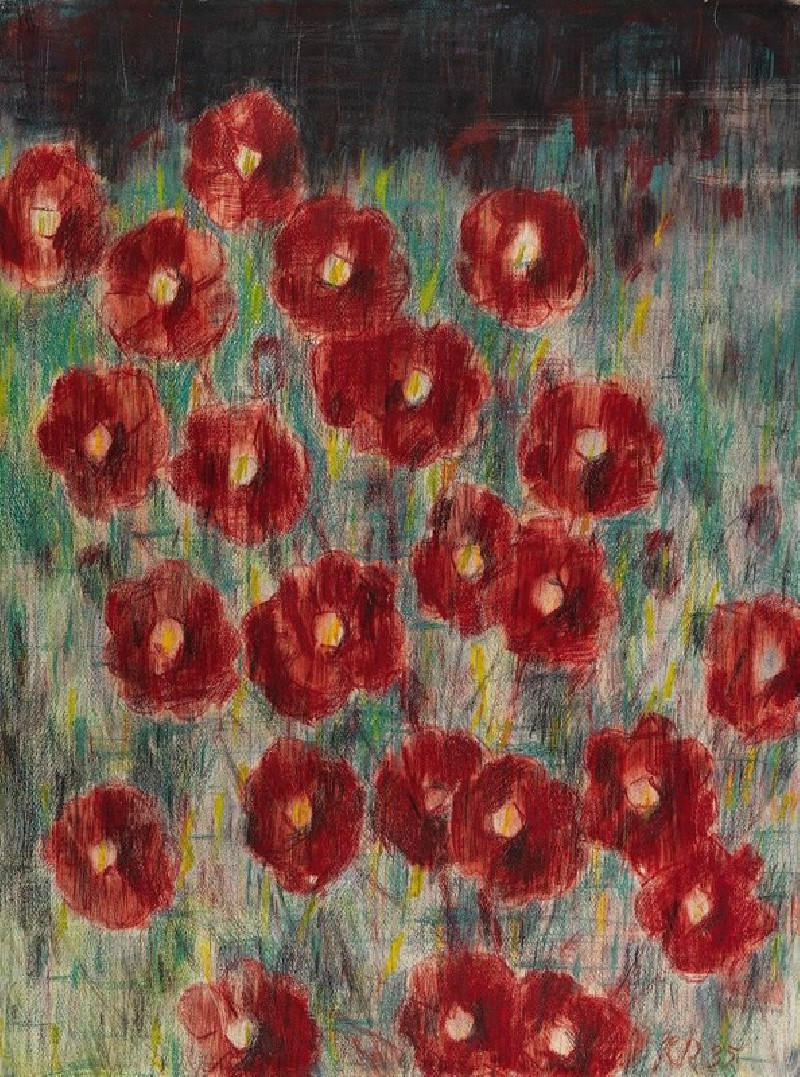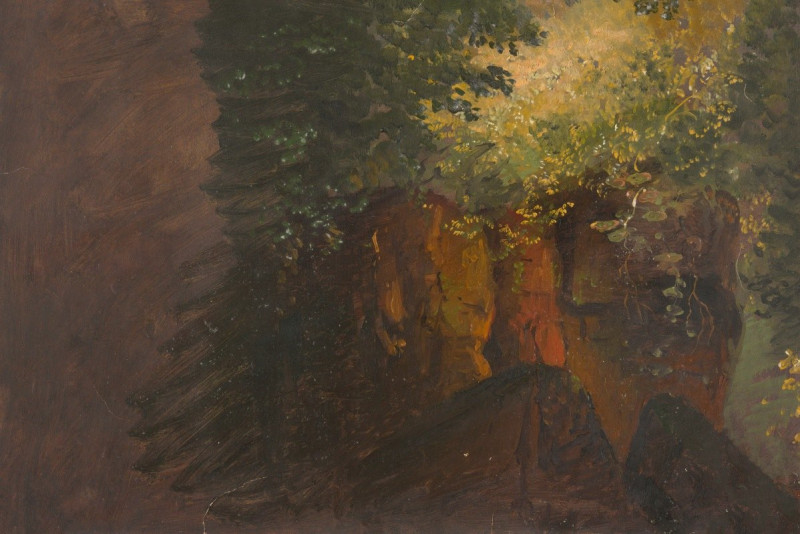Anbetung (1930)
Technique: Giclée quality print
Recommended by our customers
More about this artwork
Adolf Hölzel's "Anbetung" from 1930 is a vibrant and intriguing example of abstract art that challenges and delights the viewer’s perceptions. The painting deftly uses bold, saturated colors and dynamic shapes to convey a sense of movement and interaction among the figures, which, although not clearly defined, suggest a gathering or assembly. The title "Anbetung," meaning "Adoration" in German, hints at a spiritual or reverential theme, possibly depicting worshippers or participants in a religious ritual.Hölzel's composition breaks away from traditional representational art, opting instead for an abstract arrangement that emphasizes the emotional or symbolic essence of the scene rather than its literal depiction. The use of stark, contrasting colors such as deep reds, blues, and yellows creates a lively interplay, while the outlines and forms intersect and overlap, giving a layered depth to the work.This painting is a testament to Hölzel's innovative spirit as he explores the expressive possibilities of color and form, making "Anbetung" a mesmerizing piece that resonates with the viewer's own imagination.


